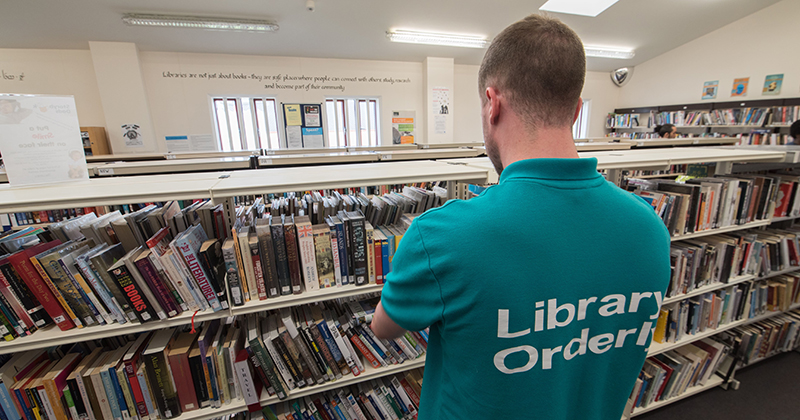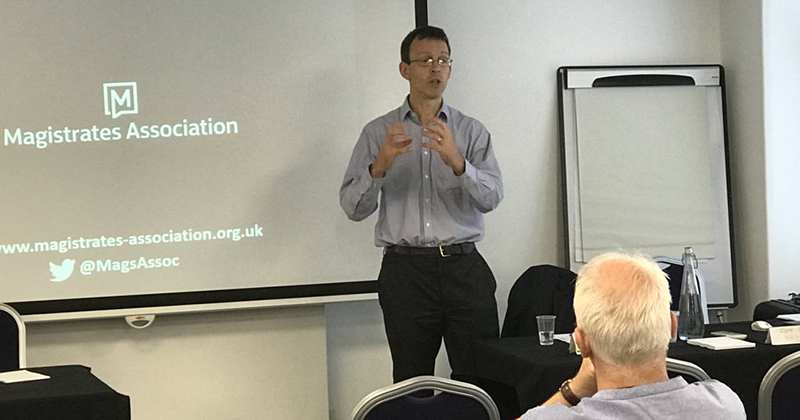Jon Collins, who is six months in as chief executive of the Prisoners’ Education Trust, explains how prison teachers feel cut off from their college colleagues
Perhaps it’s because Jon Collins, the new chief executive of the Prisoners’ Education Trust, is such a calm, precise and mild-mannered person that the scale of the scandal he describes in prisons sounds so shocking.
FE Week readers may not be aware, but you need sign-off from the Ministry Justice to go into a prison classroom – this journalist has tried unsuccessfully for six years to get it.
Setting aside the outrage that would follow if the Department for Education controlled access for journalists to colleges – there’s a safety aspect, of course, but it smacks more of a fervent desire to avoid scrutiny – the secrecy makes it difficult to understand what prison education really is like. There will be excellent practice, but it seems inexcusable not to be able to describe it.
But Collins, who is now six months into the job, is able to provide some proper insight. Of course, there have already been major leaks: back in 2014, the-then chief inspector of prisons said he was “very concerned” by the “extremely serious” situation in jails. By 2018, several prisons were described as in a “dangerous state”.
Then in November last year, the education select committee announced an inquiry into prison education, with Robert Halfon, the chair, particularly frustrated by the high proportion of prisoners with special educational needs who were neither assessed on arrival or properly supported during their sentences.

By last month, Ofsted and Her Majesty’s Inspectorate of Prisons published a joint commentary with the devastating conclusion that “little improvement has been made” since the raft of reform recommendations from the landmark Coates review of prison education in 2016.
The bar could barely be lower: between 2018 and 2019, Ofsted judged only 38 per cent of prison education as good, 44 per cent required improvement and 16 per cent were inadequate. Compare that to FE colleges, where 68 per cent are judged to be good or better. And that’s before we talk about Covid.
Collins has seen a lot of the criminal justice system. He’s got a masters in it, has worked for NACRO, the crime reduction charity, for the Fawcett Society on women in prisons, was a director at the Criminal Justice Alliance and was deputy director at the think-tank The Police Foundation.
More recently he’s been chief executive of the Restorative Justice Council and before his current role, was chief executive of the Magistrates’ Association. It’s his first time working on prison education. He’s not a man given to hyperbole – but then, the subject doesn’t need it.
“It’s a very, very limited offer,” he replies drily, when I ask him what prison education entails. A brief overview: it’s usually level 2 English and maths (with no guarantee of GCSE provision, let alone A-level, T Level or BTECs), some “digital skills” training that doesn’t necessarily lead to a qualification (“it’s more just how to use basic equipment”, Collins says) and some English courses for speakers of other languages.

The Prisoners’ Education Trust runs online courses – in 2020, the most popular was an Open University access module, followed by a business start-up course. But the numbers are tiny: 52 learners on the OU module and 47 on the business start-up course, out of a prison population in England and Wales of more than 79,000. Four providers are in charge of prison education, including two colleges: Milton Keynes College, Weston College, Novus and People Plus.
“Not only is it a very limited offer, but when you combine it with the way education is delivered, it’s extremely challenging for prison teachers,” Collins says. Classes tend to be three hours long, because moving people around the prison is difficult. Regimes can also be inflexible – inmates have to be in their cells at certain times of day.
“So you’re challenging teachers on how they can constructively use a block of three hours for people who have often not had a positive experience of education before.”
Teachers also face having to get prisoners who need a level 2 qualification to attend the non-compulsory classes, while “it’s very possible that people who have already got qualifications are doing the classes anyway to occupy themselves. One of the biggest challenges is how to engage and stretch these learners.”
It sounds like a nightmare. The surveys speak for themselves: 70 per cent of prison teachers are intending to leave in the next five years, a joint report from the Prisoners’ Learning Alliance and the University and College Union found in August. The teachers point to “no progression” and feeling like “hidden voices” in the teaching profession. What about Unlocked Grads? I ask, referring to the Teach First-style scheme that parachutes ambitious future leaders into prison officer roles. Is there something similar for prison teachers? Collins shakes his head.
“In terms of prison teachers, there’s not really a staightforward progression route in the same way […] there’s no equivalent to becoming a prison governor, if you’ve not been a prison officer. Prison teachers wouldn’t really go up via that route.”

So despite the Coates review calling for more autonomous prison governors who prioritise education, Collins says the focus of most is not on teaching. This seems unsurprising if governors are mainly coming up through the prison officer route.
“Governors want good prison education, but for most, education is not their top priority. It’s about keeping people safe – and the challenge is how you can deliver good prison education in that environment. I’m really hoping the Ofsted review will give strong pointers on that.”
The challenges of accessing education have not gone unnoticed among inmates either. In the Chief Inspector of Prisons annual report for 2020-21, just 22 per cent said they could easily access education, while just 12 per cent said the same about vocational skills or training.
Prison learners also face various legal hurdles. At present, only prisoners within six years of release are eligible for student loans to cover tuition fees, a fact the Higher Education Policy Institute has said “beggars belief”.
“We think that rule should be removed altogether,” Collins says, pointing out that jail terms have lengthened, with the government last year scrapping automatic release half way through sentences for serious crimes.
“If you’ve got someone who’s come into prisons quite young on a long sentence, and you’re trying to think about how to use that time constructively, not being able to study for a degree doesn’t seem the most effective way of managing that.”
Would-be apprentices face similar hurdles with complexities around inmates being classed as employees. The government proposed a “prisoner apprenticeship pathway” in 2016, with close involvement from the Association of Employment and Learning Providers – but in 2019 the association was still calling for the pathway to get off the ground.
To top it off, prisoners sometimes turn their back on learning because they can earn money in a prison job instead, Collins says with a grimace.
Then Covid hit. The pandemic revealed prisons are in the “digital dark ages” in terms of remote learning, the Prisoners’ Education Trust has said. Launching its five-year strategy this week, it pledged to increase the number of inmates accessing its distance learning courses while calling for a “major investment” in digital technology in prisons.

It criticised the government’s plans to roll out in-cell technology in just nine of 117 prisons next year. “But that mustn’t come at the expense of face-to-face education,” Collins says. “It must complement, not replace, face-to-face teaching. Many prisoners need a lot of support from prison teachers and officers to become learners.”
It seems that prison education, a bit like FE, is all the vogue right now. There’s a select committee inquiry, an Ofsted review, the 2019 Conservative manifesto promised a “prisoner education service”, and every justice secretary has made the right noises. But little has changed.
Collins is clear: “What’s currently on offer is as far as the money will stretch. If it’s going to be broader and better, that needs to be paid for.”
A complete revamp of the prison teacher career path, with better links between prisons and mainstream education, might also be long overdue.
“If you deliver education just for prisons, you end up with a one-size-fits-all approach,” Collins says. “But if prisons and colleges linked up more, then there would be access to a broader and more personalised curriculum. That’s one way you could move prison education closer to the mainstream.
“There’s also not a lot of thinking about how being a prison teacher fits into a teaching career. Could people do teaching in prisons as part of a more structured career?”
It’s a powerful suggestion. Distance learning is a commendable goal, but the Prisoners’ Education Trust is still trying to engage prisoners in institutions that largely don’t see education as the top priority. Perhaps Collins and others like him should be backing an exciting scheme akin to Teach First to support trainee teachers to the top in prisons.
Then, culture change might begin from the leadership down – and the scandal of our prisons, finally, will start to be resolved.









Your thoughts